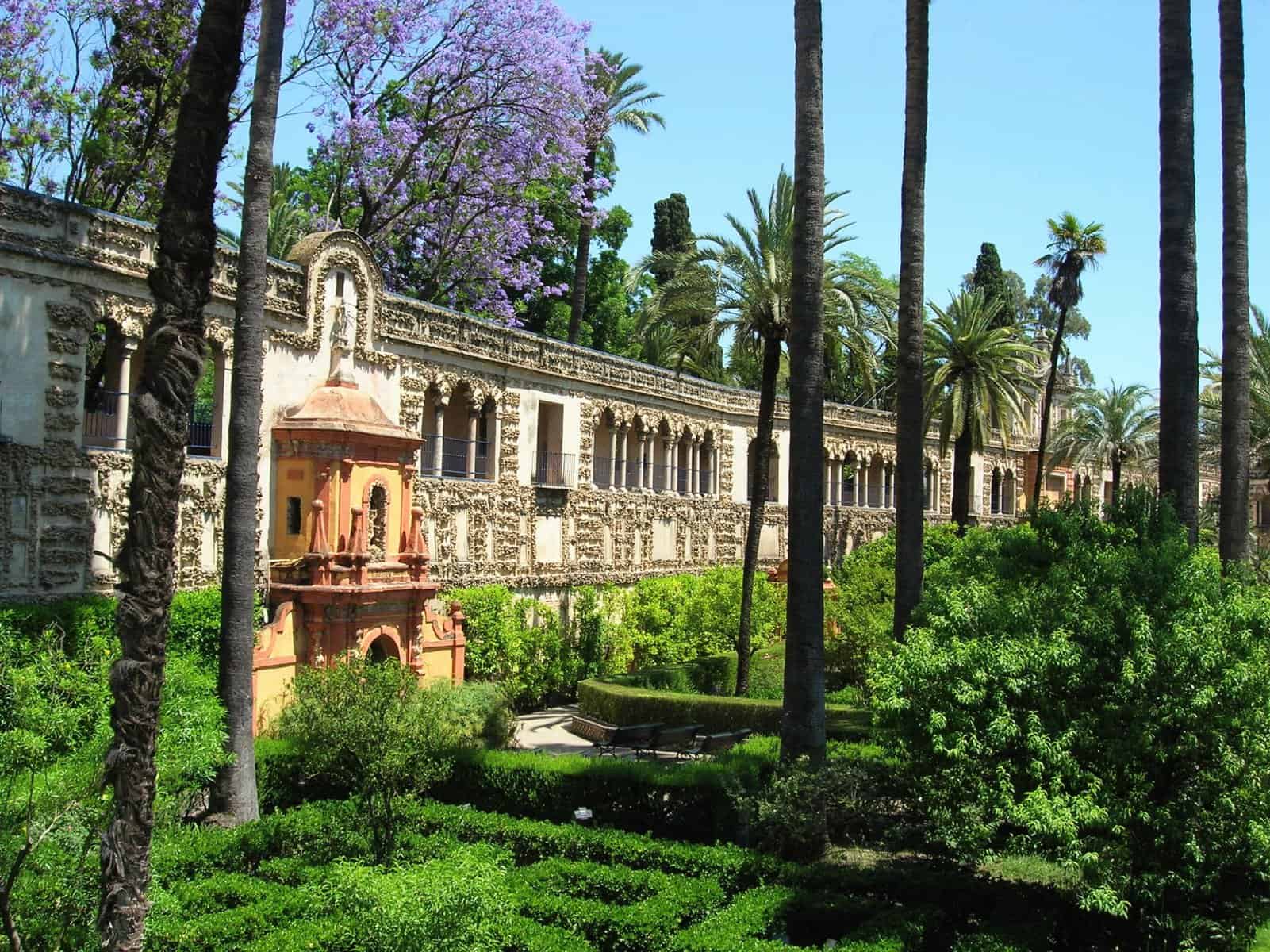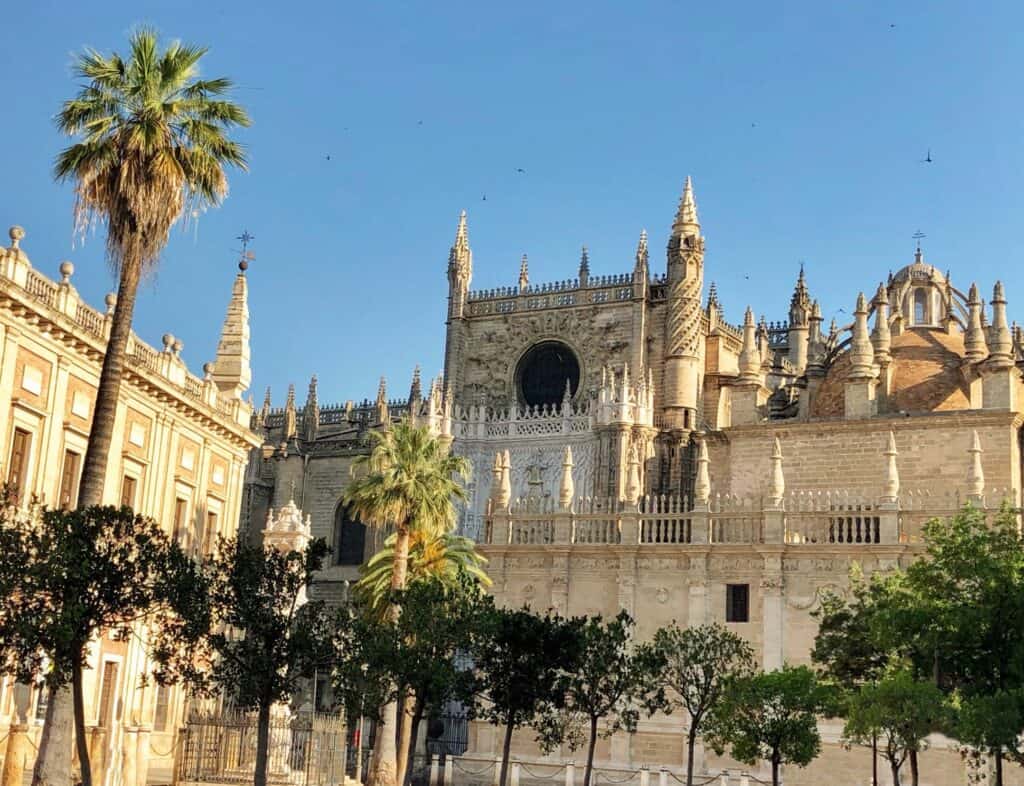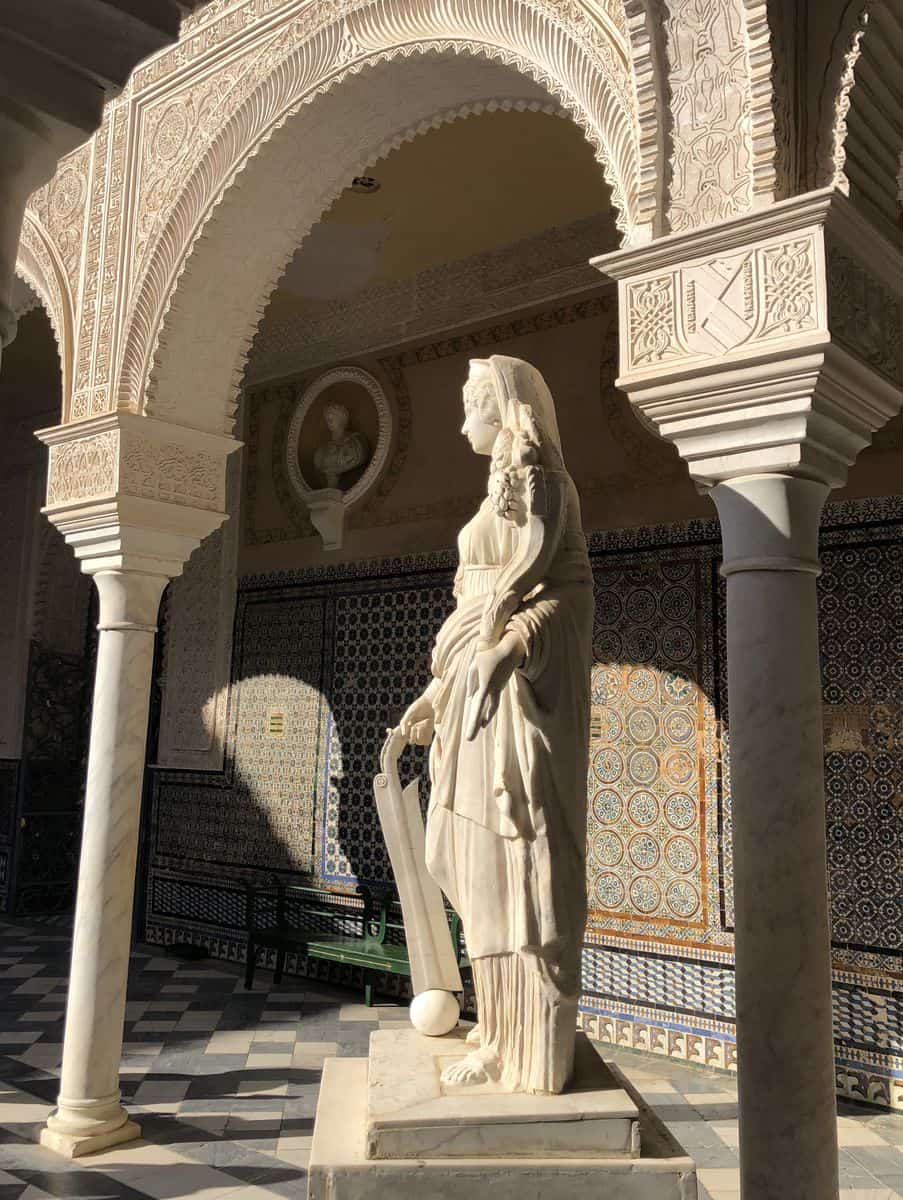Seville’s Architecture: an Islamic Legacy
Before the Inquisition and before Spain’s heyday as the gateway to the Americas, the Iberian Peninsula flourished with an exhilarating jumble of cultures. Muslims called the land Al-Andalus, and their influence ushered in a golden age. Seville, capital of Andalusia since the twelfth century, brims with remnants of a rich and complicated history. At the palace and garden complex of the Real Alcázar, Christian and Islamic styles merged to become one of Spain’s most evocative architectural treasures. Seville’s Islamic heritage also lives on in the Giralda tower and the Casa de Pilatos.

History
Islamic rule in Southern Spain lasted eight centuries and was centered around the caliphates of Córdoba (756-1130) and Granada (1232-1492). Seville first came to prominence in the years following the Córdoban dynasty, early in the 11th century. Centralized power gave way to city-states called taifas, while populations shifted and mingled as never before. Ironically, the ruling factions amongst both Christians and Muslims became more conservative, even as boundaries between the religious faiths blurred more and more in daily life. In Northern Spain, Christians supported by France began their “Reconquest,” while in the South, tribes from North Africa made Seville their capital. By the time the Christians conquered Seville in 1248, Muslims had dominated the area for over 500 years. Irrespective of religion, Islamic culture was embedded in the local identity. For instance, many Christians celebrated Mass in Arabic.
The Alcázar


Seville’s Alcázar is one of the three great Islamic architecture sites in Spain, along with the Mezquita at Córdoba and the Alhambra at Granada. However, not all of the Alcázar was built in the Islamic style. For over 500 years, nearly every Christian ruler who lived there added on to it, with wildly varying agendas. As a result, it doesn’t tell its story as smoothly as the Mezquita, although it does pick up where that building left off.

Although the Alcázar began as a fortress of the Muslim Almohads in the 11th century, only some courtyards and gardens from this early period remain. The first major addition was by a Christian ruler in the Gothic style, presumably to emphasize ideological ties with France.

The most important parts of the Alcázar were added under a pair of tempestuous Christian kings: Alfonso XI and his son Pedro, a.k.a. Pedro the Cruel. Both loathed the French, so it’s not surprising that they returned to the local Islamic style rather than the Gothic. What’s interesting is that they had very different relationships with the Muslim community and presumably different motivations for adopting their architecture. Alfonso XI built the Hall of Justice to “celebrate” a military victory over Muslim-held Granada. Scholars have called this an act of “triumphalism,” or a way of seizing culture as well as territory.

By the time Pedro inherited the throne ten years later, the political climate had shifted yet again. Pedro and the Muslim king of Granada formed an alliance, and their two palaces, the Alcázar and the Alhambra, began to influence one another. In this light, Pedro’s additions seem less like “triumphalism” and more like an expression of local identity.

Other non-Islamic buildings in Andalusia, including synagogues, already featured Arabic calligraphy for traditional expressions of piety. The Alcázar went a step further, with scripts proclaiming the glory of “Sultan Pedro.”

One of the most striking creations of Pedro’s era is the Hall of Ambassadors, where he held court from a throne beneath a starry dome. Golden muqarnas, a typical feature of Islamic architecture, adorn the ceiling and smooth the transition between straight walls and round dome.

The Alcázar’s gardens could fit the entire set of buildings several times over. Closer to the palace, the earlier Islamic portions feature geometrical arrangements of plants and pools. Further out, the later additions mix formal hedges and statues with sprawling grassy plots under gargantuan trees. From walls of bougainvillea to the leaves of a living maze, everything glows under the Andalusian sun.
Seville’s Cathedral and the Giralda
Typically, when Spanish Christians wrested a town from the Muslims, they would reconsecrate the central mosque and use it as a church. In some cases, they eventually tore down the mosques altogether. In Seville, Christians replaced the mosque with a church which would become the largest Gothic cathedral in the world. All that remains of the original mosque are the courtyard and minaret.

Seville’s cathedral exterior is a sprawling, slightly messy mixture of pieces with multiple styles. They all compete for attention with intricate details, but share a neutral palette. The rows of orange trees, originally planted in the courtyard of the mosque, hint at what was destroyed.
The Reconquest of Spain finally ended when Granada, the last Arabic holdout for 250 years, submitted to King Ferdinand and Queen Isabella. In Seville, however, the Islamic minaret still towered over the cathedral. It wasn’t long before the Christians removed the minaret’s sacred spheres on top and added a bell tower instead. Now the city had a Christian skyline, ringing with bells for mass instead of Islamic calls to prayer.

The name “Giralda” comes from the weather vane on top, which is about 30 feet (7 m) high if you include its base. Inside, a ramp spirals all the way up to the top. The views are well worth the moderate climb.
Casa de Pilatos

By the Renaissance, Andalusians had clearly adopted Islamic architectural styles for secular purposes. The Casa de Pilatos, for example, has many of the tiles and carvings used in the Alcázar. Begun in 1483 for a ducal family, this is considered the model Andalusian palace. It’s a great opportunity to study craftmanship similar to that of the Alcázar in a less crowded setting.


In an unusual conjunction of styles, the owners used Islamic architecture as a backdrop for their collection of Italian art. Ancient Roman statues – some originals, some reproductions – appear throughout the property, and later additions to the building and gardens featured the new Renaissance style emerging from Florence.
Practicalities
The AVE high-speed trains connect Seville to Madrid or Grenada in 2 1/2 hours.

We stayed in the old Jewish Quarter (Barrio Santa Cruz), less than 10 minutes’ walk from the Cathedral and the Alcázar. It was atmospheric and convenient, with great tapas. Although we saw plenty of tourists, they didn’t dominate. Seville has managed to grow into a modern city without losing its historical color.
Further Reading


We also have posts on Islamic architecture in Spain, Córdoba’s Mezquita, Toledo’s Mudéjar architecture, Granada’s Albaicín district, and the Alhambra.
For more on Seville’s history, we recommend Maria Rosa Menocal’s book The Ornament of the World: How Muslims, Jews and Christians Created a Culture of Tolerance in Medieval Spain.

